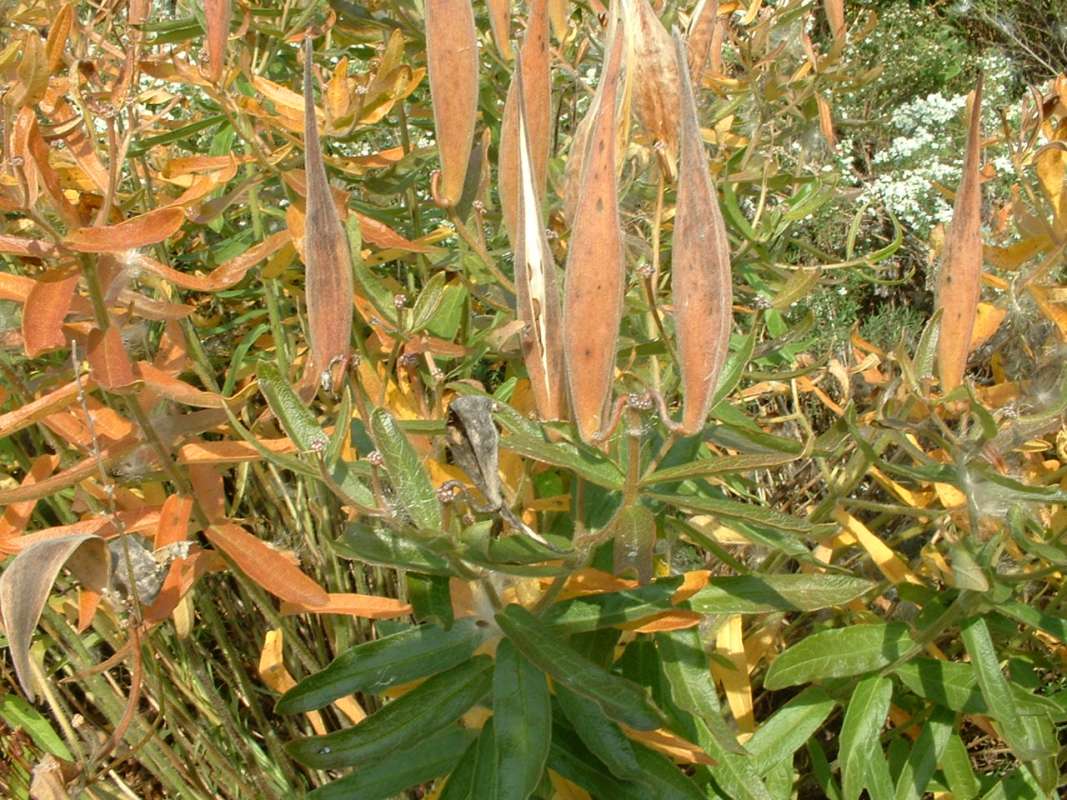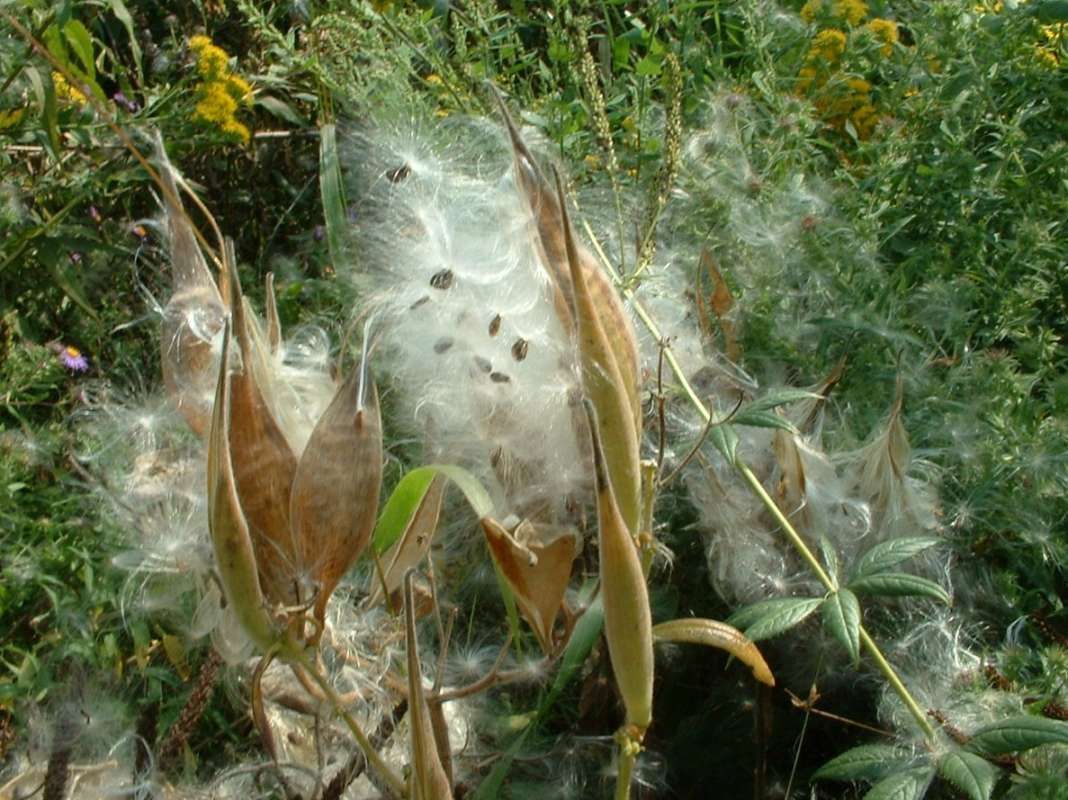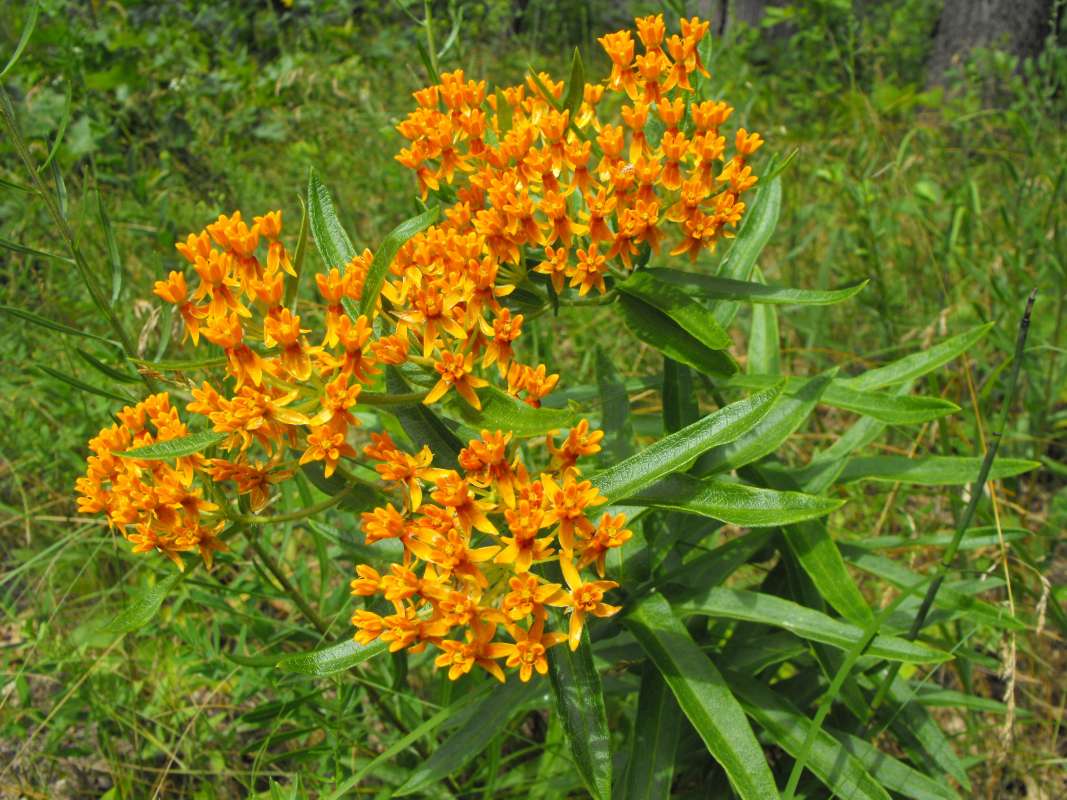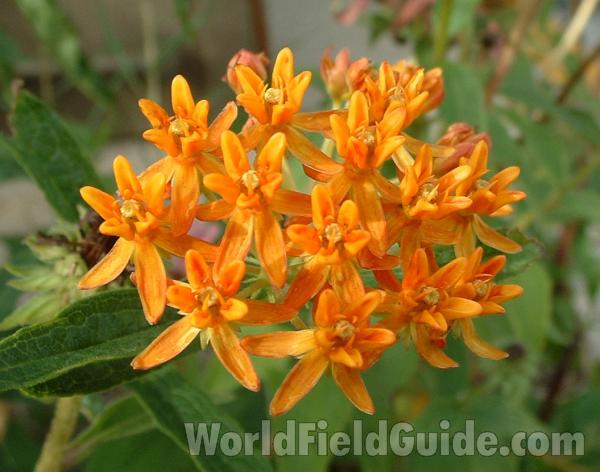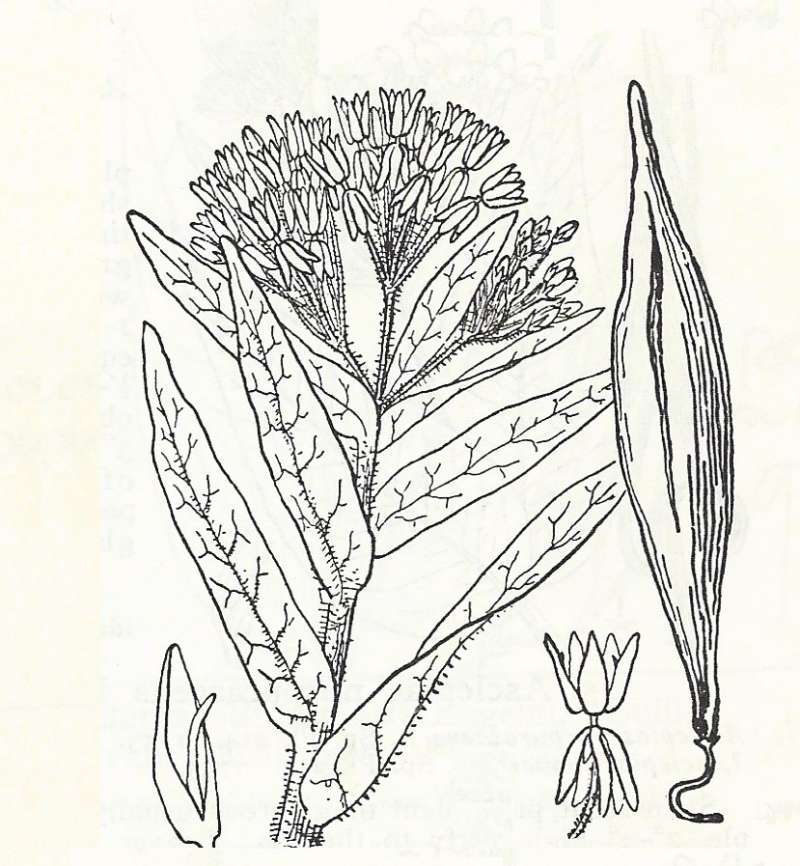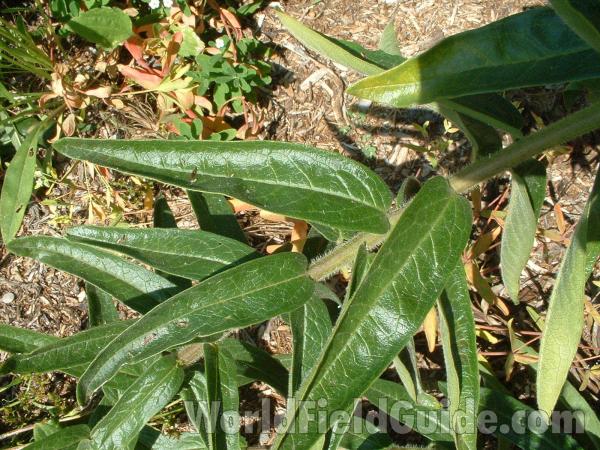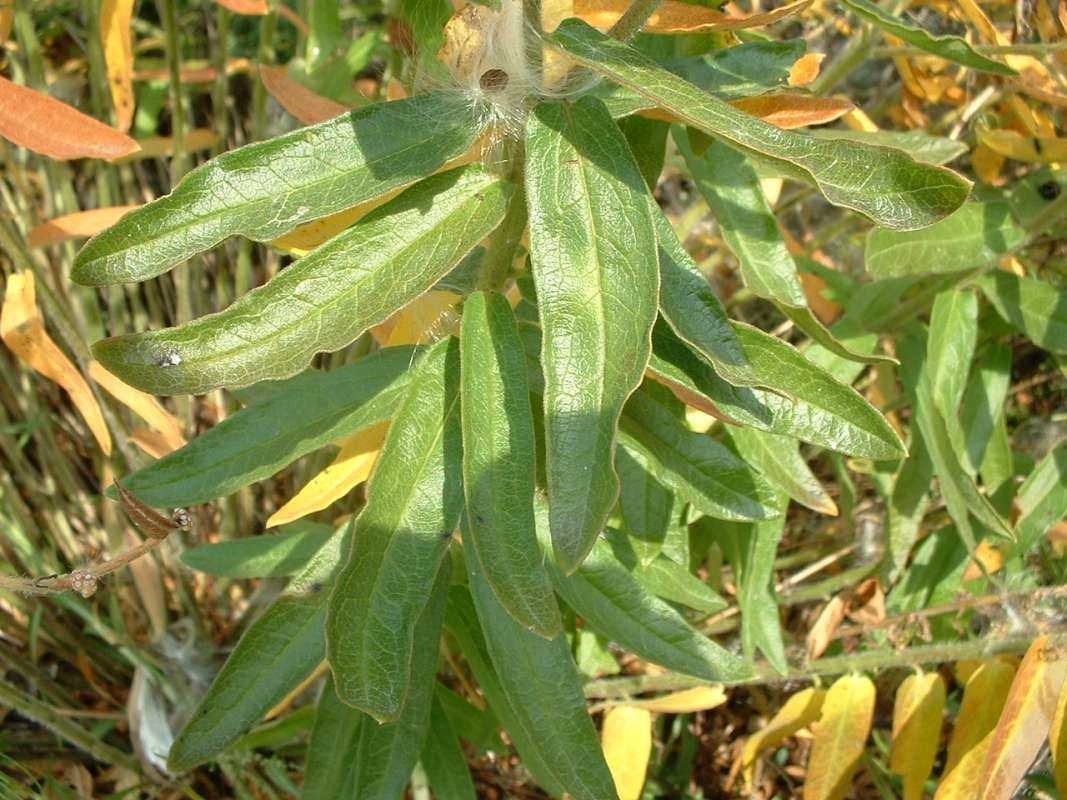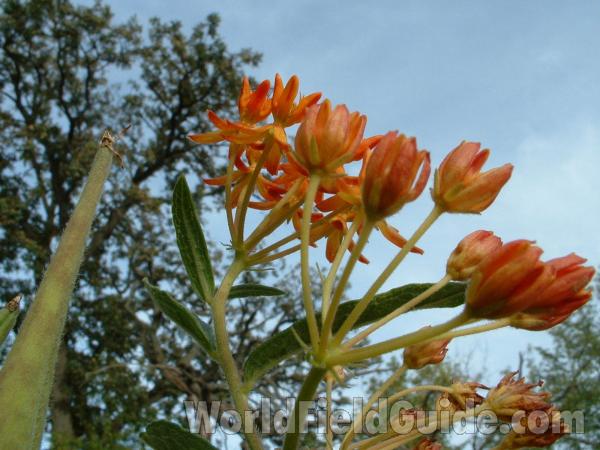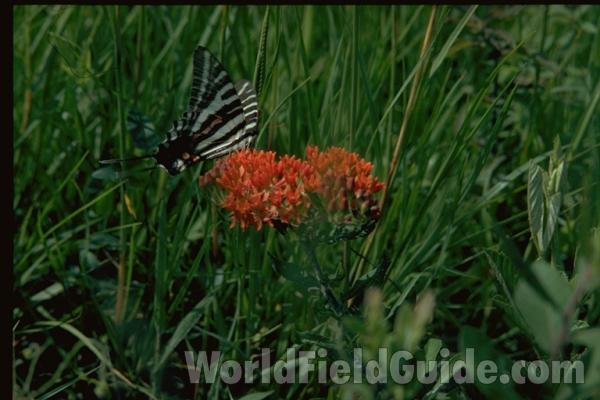SPECIES INFO
Butterfly weed (Asclepias tuberosa) is found from Maine south to Florida, and west to Minnesota, Texas, Chihuahua, and Arizona. The orange flowers help identify this variable plant.
In older literature there is a species called "Decumbent Butterfly Weed" (Asclepias decumbens) named by Linnaeus. This form is found from Ohio to Illinois and south to Florida. This somewhat horizontal form has broader leaves than typical Asclepias tuberosa, but also has the orange flowers. This Linnaeus lifeform has been placed as a synonym of Asclepias tuberosa. (The name Asclepias decumbens was used again for a different lifeform from the southwestern United States.)Asclepias (Milkweeds) is a genus of about 108 species native to the New World and South Africa. This genus has recently become established in Eurasia. The Britton and Brown three-volume botany on the eastern United States (An Illustrated Flora of the Northern United States and Canada, 1913) shows 21 species. Kartesz shows 79 species and 15 subspecies in greater North America, including the United States, Hawaii, Canada, Greenland, Puerto Rico and the U.S. Virgin Islands. The typical milkweed grows its seeds in pods that open in fall or winter releasing the seeds to the wind. The well-known monarch butterfly (Danaus plexippus) appears to feed primarily on this genus.
The milkweed family in North America is represented by several genera, but most species are in three genera:
Asclepias: Typical erect milkweeds, with 79 species
Cynanchum: Misc. include vines with 24 species
Matelea: Mostly vines with 29 species.
Milkweed Family (Asclepiadaceae) contains about four thousand species of plants of worldwide distribution. Most of these plants have milk-like juices. Of particular interest are the Milkweeds (Asclepias) of North America which serve as food for the Monarch butterfly. Also of interest are the stem succulents of Africa.
There are about 150 species in greater North America organized into 15 different genera. The North American counts include several African species. For a detailed analysis of this family and the various tribes refer to the Illustrated Encyclopedia Cacti by Gordon Rowley. More recently there is a series on succulents published by Timber Press of North America.
Some modern authors have combined the dogbane(Apocynaceae) family and the milkweed (Asclepiadaceae) family into a single family Apocynaceae. (We have kept them separate herein.)
Because of the large number of species in nature, we have decided to break this family down into its major groups. The major groups per Heywood etal in this family are:
Subfamily Asclepiadoideae (180 genera with about 3,000 species)
Tribes in the Asclepiadoideae are:
#11 New World Asclepiaceae (Ascelpias, Matelea, Cynanchus)
#12 Old World Asclepiaceae (Cynanchus, and others)
#16 Ceropegiea (Caralluma, Hurnia, Stapelia genus)
#17 Ceropegiea (Ceropegieae)
#22 Fockeeae
#26 Marsdenieae
Subfamily #30 Rauvolfioideae (80 plus genera, 1,000 species)
Subfamily #40 Apocynoideae (Herein as a separate family)
Subfamily #50 Periplocoideae (30 plus genera, 180 species)
Subfamily #60 Secamonoideae (7 genera, 180 species)
Subfamily #81 Misc. Milkweeds awaiting assignment
Contortae Order is usually organized to contain the Olive, Gentian, Milkweed, and a few other families. Recently some authorities have removed certain genera from the Gentian Family and placed them in the Menyanthes Family.
Dicots (Dicotyledoneae Class) are the predominant group of vascular plants on earth. With the exception of the grasses (Monocots) and the Conifers (Gymnosperms), most of the larger plants that one encounters are Dicots. Dicots are characterized by having a seed with two outer shell coverings.
Some of the more primitive Dicots are the typical hardwood trees (oaks, birches, hickories, etc). The more advanced Dicots include many of the Composite (Aster) Family flowers like the Dandelion, Aster, Thistles, and Sunflowers. Although many Monocots reach a very high degree of specialization, most botanists feel that the Dicots represent the most advanced group of plants.
Seed plants (Phylum Embryophyta) are generally grouped into one large phylum containing three major classes: the Gymnosperms, the Monocots, and the Dicots. (Some scientists separate the Gymnosperms into a separate phylum and refer to the remaining plants as flowering plants or Angiospermae.)
For North American counts of the number of species in each genus and family, the primary reference has been John T. Kartesz, author of A Synonymized Checklist of the Vascular Flora of the United States, Canada, and Greenland (1994). The geographical scope of his lists include, as part of greater North America, Hawaii, Alaska, Greenland, Puerto Rico, and the Virgin Islands.
Kartesz lists 21,757 species of vascular plants comprising the ferns, gymnosperms and flowering plants as being found in greater North America (including Alaska, Hawaii, Greenland, Puerto Rico and the Virgin Islands.
There are estimates within the scientific world that about half of the listed North American seed plants were originally native with the balance being comprised of Eurasian and tropical plants that have become established.
Plant kingdom contains a large variety of different organisms including mosses, ferns, and seed plants. Most plants manufacture their energy from sunlight and water. Identification of many species is difficult in that most individual plants have characteristics that have variables based on soil moisture, soil chemistry, and sunlight.
Because of the difficulty in learning and identifying different plant groups, specialists have emerged that study only a limited group of plants. These specialists revise the taxonomy and give us detailed descriptions and ranges of the various species. Their results are published in technical journals and written with highly specialized words that apply to a specific group.
On the other hand, there are the nature publishers. These people and companies undertake the challenging task of trying to provide easy to use pictures and descriptions to identify those species.







